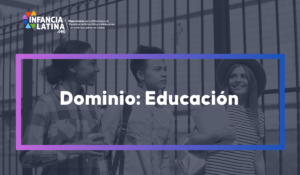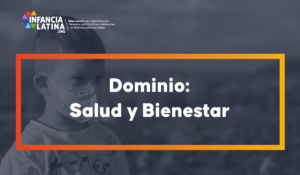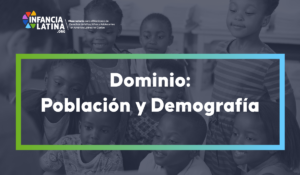The first years of a girl or boy's life establish a crucial foundation for their emotional, social and cognitive development, where they need loving and accepting care. In early childhood, the impact of violence is severe and contributes to cycles of vulnerability that are often irreversible and generate immediate and long-term impacts. As children grow older, their exposure to violence can have permanent impacts where their ability to thrive and contribute to society will be seriously compromised. Exposure to stress, trauma, and other adverse childhood experiences have been shown to have observable long-term effects on brain structure in children, hampering their ability to reach developmental milestones and enjoy positive outcomes in life. In addition, violence is associated with far-reaching costs, which divert billions of dollars worldwide from social spending, slowing down economic development with strong effects on the human and social capital of States.
Girls, boys and adolescents in the Latin American and Caribbean region are more exposed than ever to be victims of serious physical or psychological violence given the risk factors and inequality that has been exacerbated by the current COVID-19 crisis, also limiting, ways to reach protective services. The contagion prevention measures have locked up children with their aggressors, who are experiencing high levels of stress, with the lack of structure to go to school, and more exposure to the risks of cyberbullying with the need to attend school online. In addition, the inequality factors that persist in the region put certain groups, such as girls, boys and adolescents living in poverty and migrants, at greater risk of suffering the consequences of the impact of the pandemic in the region.
The great lack of comparable and reliable data on violence in all its forms in the region is a great weakness where it is necessary to invest in alliance to expose the strong prevalence of violence in the home, school and in the community through improvement information systems. It is recognized that in the region, there is a culture of violence that persists in all aspects of life. Cultural norms promote and justify, in many cases, physical violence as a method of discipline in parenting and relationships. A recent UNICEF and ECLAC bulletin cites a prevalence estimate of 55.2% for physical aggression and 48% for psychological aggression in child rearing in Latin America and the Caribbean. Violence also has different impacts on girls than on boys because of the cultural norms that exist. The lack of coherent protection systems puts girls, boys and adolescents in the region at risk of child labor, violence, crime, extortion and serves as a cause of migration.
According to the 2019 Findings Report on the Worst Forms of Child Labor produced annually by the U.S. Department of Labor, Latin America and the Caribbean have made progress by working with international organizations to expand access to schools for children more vulnerable to labor exploitation. Barriers to education are often seen in rural settings where there may be long distances to travel to get to school; poor infrastructure including limited or no access to transportation; shortage of qualified teachers; lack of resources; as well as an alarmingly high prevalence of early pregnancy. Indigenous peoples, migrants and refugees are among the populations that experience limited access to education, putting them at greater risk of child labor. Despite budget constraints, the region has made progress in expanding research on child labor and conducting specialized training on children's rights and child trafficking for law enforcement officials. However, significant enforcement gaps remain, especially when the informal labor sector is taken into account, leaving children working in these settings with limited legal avenues of protection. There is an insufficient number of labor inspectors, a lack of coordination between central agencies responsible for the enforcement of child labor laws and policies, as well as limited documentation on labor law enforcement efforts. Unified and consistent efforts are required to address child labor in the region. Notably significant advances have been observed in some countries including: Argentina, Colombia, Costa Rica, Ecuador, Guatemala, Paraguay and Peru.
In February 2020, the Armed Conflict Location and Event Data Project (ACLED) expanded its coverage to track real-time events including political violence events, deadly riot-led demonstrations, gang actors, among other things, to Latin America and the Caribbean. In 2019, ACLED recorded more than 19,000 deaths reported during demonstrations and events of political violence, with half being in Mexico and a quarter in Brazil, and at least two-thirds of the reported fatalities were civilians. They counted 170 different armed gangs in the region, as omnipresent actors that shape the panorama of political violence in the region, although four fifths of all gang violence is attributed to anonymous groups. Half of the armed gangs they identified originate from Mexico. According to the information collected, clashes against state forces represent almost a third of all gang activity and more than half of these events occur in Brazil, a quarter in Mexico and more than 13% in El Salvador. According to data from the United Nations Annual Crime Trends Survey (UN-CTS) in 2016 (the most recent year for which data are available for most countries) the rate of intentional homicide victims per 100,000 inhabitants, male youth between the ages of 15 and 29 was an alarming 296.5 in El Salvador, 167.4 in Honduras, 127.6 in Jamaica, closely followed by Brazil with 120.1. These figures are believed to be underestimated and therefore levels of violence at the community level are likely to be even worse than these figures.
Between February and March 2021, there has been an increase of 70.6% in encounters with unaccompanied minors at the border between the United States and Mexico, with 172,331 arrests in March alone, 5 times more than in March of last year. The total number of encounters between the US Department of Homeland Security Customs and Border Protection and unaccompanied minors in 2021 already exceeded last year's total by 111,791 unaccompanied children and adolescents. May has historically been the month with the highest rates of encounters with Customs and Border Protection agents. (US Department of Homeland Security (USBP) and Office of Field Operations (OFO) Customs and Border Protection. According to the Pew Research Center, this increase is likely This is due to the widespread economic crisis resulting from the pandemic, a series of natural disasters in Central America, as well as the public perception that the Biden Administration may be more receptive to migrants. The number of people of Mexican origin detained in the The US border is on the rise, constituting 42% of those detained at the border in February, far more than in recent years. Under the law, children can only be legally detained for three days in a detention center before being transferred to a shelter, however, as arrests have skyrocketed, children are often detained longer, given the lack of space in shelters.
Sources:
Annual report of the Special Representative of the Secretary-General on Violence against Children, A / 73/276, 30 July 2018
COVID-19 Report: ECLAC and UNICEF (Dec 2020) Social protection for families with children and adolescents in Latin America and the Caribbean An imperative in the face of the impacts of COVID-19.
Department of Labor (2019) Findings on the Worst Forms of Child Labor. https://www.dol.gov/sites/dolgov/files/ILAB/child_labor_reports/tda2019/2019_TDA_Report_Online_Final.pdf
Armed Conflict Location & Event Data Project (ACLED) (Feb 2020) PRESS RELEASE: ACLED expands its coverage to Latin America and the Caribbean https://acleddata.com/acleddatanew/wp-content/uploads/2020/02/ACLED_LATAM_PR-Spanish_2020.pdf
United Nations Office on Drugs and Crime United Nations Annual Crime Trends Survey (UN-CTS).


